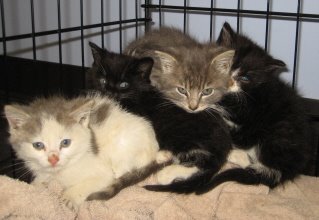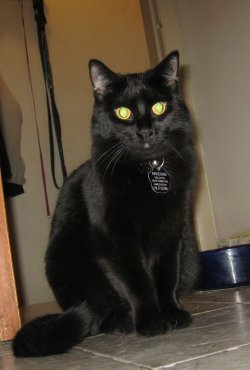In uncertain times, value is key. We are all reexamining our budgets, our habits, our futures, and making whatever adjustments make sense. We start to look at things in terms of, "Do we really need that?" and, "Is this a good deal?" We all like to throw around our hard-earned cash on "frivolous" things from time to time, but what is the definition of frivolous? Isn't something that simply and reliably makes us happier actually a necessity? Perhaps we should be thinking in terms of making investments in a better mind set. When the world is scarier, interesting things happen -- people become more self-sufficient. We educate ourselves and we learn to adapt. While most natural creatures begin to compete relentlessly when there is a scarcity of resources, human beings tend to realize that it is with a spirit of cooperation that we all succeed a little better. Perhaps some individuals give up and perhaps some individuals get more than is fair, but in general, we can reach higher highs as a group than we can as competitors.
So what does all this have to do with pet grooming? Well, it's become obvious through the last few economic downturns that pets are a priority. They provide obvious, undeniable psychological benefits. They help to stabilize and inspire us during difficult times. They make fun more fun. They make grief more bearable. They are welcome distractions, nonjudgemental friends, and gratefully dependent children. They are a lifeline that reminds us all that we are connected and although unique and independent, we are never alone.
Now some might (and do) say that while pet ownership is great, society is going too far and treating them the same or better than people. Pet spas and daycare and vet bills and little strollers and doggie clothes and bows and fancy food dishes... They're animals, right? These luxuries are beyond their little animal mental capacity to appreciate, right? Well, yes and no.
Our pets have learned, through early socialization, to depend on us for food, shelter, and other basic life-giving necessities. And they are highly intuitive beings (meaning, essentially, that they don't spend a lot of time plotting or planning... they just act and react). That means that our emotions affect them profoundly. They
need for us to be confident, peaceful, joyful. In the dog world, particularly, but for cats as well, an unhappy human does not bode well. An unhappy human is as bad a sign for a domestic animal as a long winter, a draught, or incoming storms are for wild animals. When we bond with them, we
become their weather. The storms they have to face are
our storms, whether they understand them or not. So they learn the tricks that work on us -- they learn to affect the weather, so to speak, by doing things that they believe make us feel good in some way. They do this because it makes them feel good -- to take an active role in comforting or otherwise engaging the source of their comfort and survival -- but the end result for us is an animal who will do whatever he can think of to make us happy. And unlike other people, who may care about us and our emotional well-being, animals do not get discouraged by our lack of enthusiasm. As long as they are fed, they will do whatever they think it is that gets them fed. Forever. They don't give up on us.
My ideas about the benefits of regular grooming come out of that line of thought. At its most superficial level, without any other benefits, the simple transformation of a dirty pet into a clean one is already a great way to make the world a better place for pets and people. Even if the pet doesn't really care to be clean, the extra happiness his owner feels will be picked up and reflected by the animal. Similarly, a good-looking haircut gives people and through them, their pets, increased joy. But, as if that were not enough already, grooming is much more than a superficial process.
Bathing pets is a sanitizing process. Like people shampoos and soaps, pet products are designed not only to remove benign dirt and old body oils, they also remove the surplus of microorganisms that pets and people are constantly picking up as we move through the world. Bacteria, yeast, viruses, molds, dander, dust, mites and all the various creatures that we know about but can't see can become overwhelming to the immune system if they are not dealt with periodically. Today's artificially engineered pets are at greater risk than wild animals because in domestic animals, we concentrate more on treating disease than we do on breeding resistance to disease, especially in breeds who are physically the most different from their natural ancestors. The diet and lifestyle restrictions that we place on our pets also contribute to a less robust immune system and domestic animals simply need regular, intelligent external support to maximize their health. They are bred to survive as companions to humans and because they are good at that role, the trade-off is often a decreased natural health level. Diet, exercise, veterinary care, and grooming are all health supplements.
*Bathing to remove oil, dander, microorganisms
*Conditioning to repair and protect the coat and skin
*Deshedding to eliminate dead hair that can build up and cause skin problems
*Detangling to prevent tangling and matting that can cause severe discomfort and skin problems
*Sanitary trimming to prevent infections related to the build-up of fecal material, urine, or discharge around the eyes and ears
*Manageable hairstyles for pets with more high-maintenance coats, to provide a clean, comfortable lifestyle with reduced workload for the pet owner
*Ear cleaning and plucking to reduce the likelihood of ear infections
*Nail trimming to prevent painful joint twisting with every step or injuries from long nails being caught and pulled
And beyond that, a professional groomer who is knowledgeable in areas like veterinary medicine, holistic pet medicine, training and behavioral issues, and other pet-related areas is a wonderful resource for pet owners. Regular grooming by a professional is an opportunity for a distinct set of well-trained eyes to watch over your pet for you, to catch signs and symptoms of medical and behavioral issues before they become more severe, while they can be dealt with more easily. A groomer who sees your pet for hours at a time on a regular basis gets to know your pet well and can catch changes in their coat, skin, odor, body, behavior, etc that you (as a daily observer) or your vet (as a yearly or bi-yearly observer) may miss. A groomer's perspective can be a great asset for pet owners who are interested not only in getting help with their pet's grooming needs but who want to learn more about what and why those grooming needs are for their particular pet, what sort of common health issues their pet may face, ways to deal with various kinds of problem behaviors, and recommendations for finding other kinds of pet professionals who can become part of their pet care team. Most groomers are more than happy to share information, to point out health warnings, to give coat and skin care training information, to talk about training issues, and to generally spend time helping clients understand and care for their pets.
The socialization aspect of grooming is of great value as well. The more your pet is regularly exposed to new and challenging experiences, the more confident and anxiety-free he will become.
Going to the grooming shop involves transportation to a non-threatening environment, handling by strangers, loud noises, unusual experiences, and other animals. Your pet is taught a variety of behaviors that are useful and translatable to other areas of his life -- how to behave when someone picks you up, how to enter and exit a cage safely, how to behave up on a grooming table, how to behave when there are scissors or clippers near your face, how to behave for a bath, and on and on... Groomers with experience in animal handling become very, very good at getting safe behavior from animals. Animals who are groomed regularly are much calmer and behave in ways that help to keep them safe and focused on the people in charge even in challenging environments. A groomer who is a good animal handler will teach your pet to trust and respect human beings in a way that even you, as the owner, can't accomplish by yourself. It is an entirely new level of socialization for your pet and, when it is conducted properly and regularly, can pay off enormously in terms of your pet's confidence level and general anxiety level.
In other words, grooming is a perfect example of a cooperative effort that benefits everyone -- pets, owners, and the groomer. Working together to make the world a better place for animals makes a better world for us all. Becoming better pet owners, better groomers, better collaborators adds tremendous value to the lives of everyone involved. Cleaning up a cat or a dog isn't frivolous -- it is a fantastic investment in the health and well-being of us all.



 It is official, the referee has called it, it is a Snow Day. Like friends meeting for coffee, the safety of others is a priority. There are no cancellation fees or managers called or policies upheld. There are no excuses, no accusations, no frustrations. The important thing is that everyone is safe and warm. This is the pleasure of owning a small business.
It is official, the referee has called it, it is a Snow Day. Like friends meeting for coffee, the safety of others is a priority. There are no cancellation fees or managers called or policies upheld. There are no excuses, no accusations, no frustrations. The important thing is that everyone is safe and warm. This is the pleasure of owning a small business.